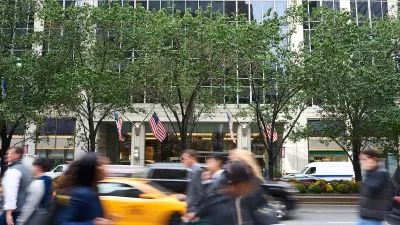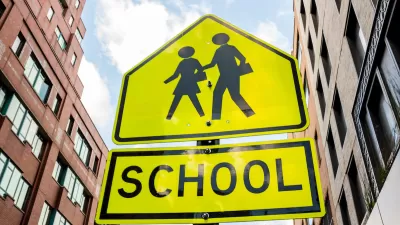One out of ten New Yorkers gets lost every week, according to the city's Department of Transportation, and this does not include out-of-towners. In March, the city will begin installing 150 wayfinding signs to help pedestrians navigate their way.
“Whether you’re a life-long New Yorker or a first-time visitor, everyone knows the feeling of walking out of a building or a subways station and being turned around, not knowing where you are,” said Janette Sadik-Khan, Transportation Commissioner. “These maps will help everyone in the city get around.” The signs will be located at high-traffic pedestrian locations in Midtown, Chinatown, Long Island City and Prospect Heights and Western Crown Heights. A sample shows that they will include major landmarks, local businesses, and estimated transit times within a 5-minute proximity. What's innovative is that these new maps will be laser printed directly on glass, adds Matt Chaban, and they will be formatted in "'heads-up mapping,' meaning that they are oriented the way a person is looking."
The winning bid for the project comes from PentaCity, a group made up of graphic design studio Pentagram, map makers City ID and industrial designers Billings Jackson. Pentagram has collaborated with the city on other recent projects including the the LOOK safety campaign and new parking signs.
The $6 million project was funded largely by the federal Department of Transportation, and most of the rest from local business improvement districts (BIDs). Many BIDs already have their own signs, says Chaban, but "[t]he goal was to unify all the wayfinding signage, including a new font called Helvetica DOT that Pentagram designed special for the department, a throwback to the same font gracing the subways." The city believes that the signs will help people learn the city better, and Sadik-Khan said, "That's good for business, that's good for communities, that's good for everybody. People will start to mix it up, exploring new neighborhoods and even new blocks in their old neighborhoods."
FULL STORY: Lost City of New York: New Sleek DOT Signs Help Pedestrians Find Their Way

Americans May Be Stuck — But Why?
Americans are moving a lot less than they once did, and that is a problem. While Yoni Applebaum, in his highly-publicized article Stuck, gets the reasons badly wrong, it's still important to ask: why are we moving so much less than before?

Using Old Oil and Gas Wells for Green Energy Storage
Penn State researchers have found that repurposing abandoned oil and gas wells for geothermal-assisted compressed-air energy storage can boost efficiency, reduce environmental risks, and support clean energy and job transitions.

Placekeeping: Setting a New Precedent for City Planners
How a preservation-based approach to redevelopment and urban design can prevent displacement and honor legacy communities.

Study: Maui’s Plan to Convert Vacation Rentals to Long-Term Housing Could Cause Nearly $1 Billion Economic Loss
The plan would reduce visitor accommodation by 25,% resulting in 1,900 jobs lost.

Idaho Data: Unexpected Vehicle Repairs Exacerbate Housing Instability, Eviction Risk
Over 21 percent of clients struggle with transportation barriers.

A Year-Long Investigation On Permanent Supportive Housing
The New York Times reveals what’s working and what’s not in the cornerstone of Housing First.
Urban Design for Planners 1: Software Tools
This six-course series explores essential urban design concepts using open source software and equips planners with the tools they need to participate fully in the urban design process.
Planning for Universal Design
Learn the tools for implementing Universal Design in planning regulations.
Heyer Gruel & Associates PA
City of Moreno Valley
Institute for Housing and Urban Development Studies (IHS)
City of Grandview
Harvard GSD Executive Education
Salt Lake City
NYU Wagner Graduate School of Public Service
City of Cambridge, Maryland





























